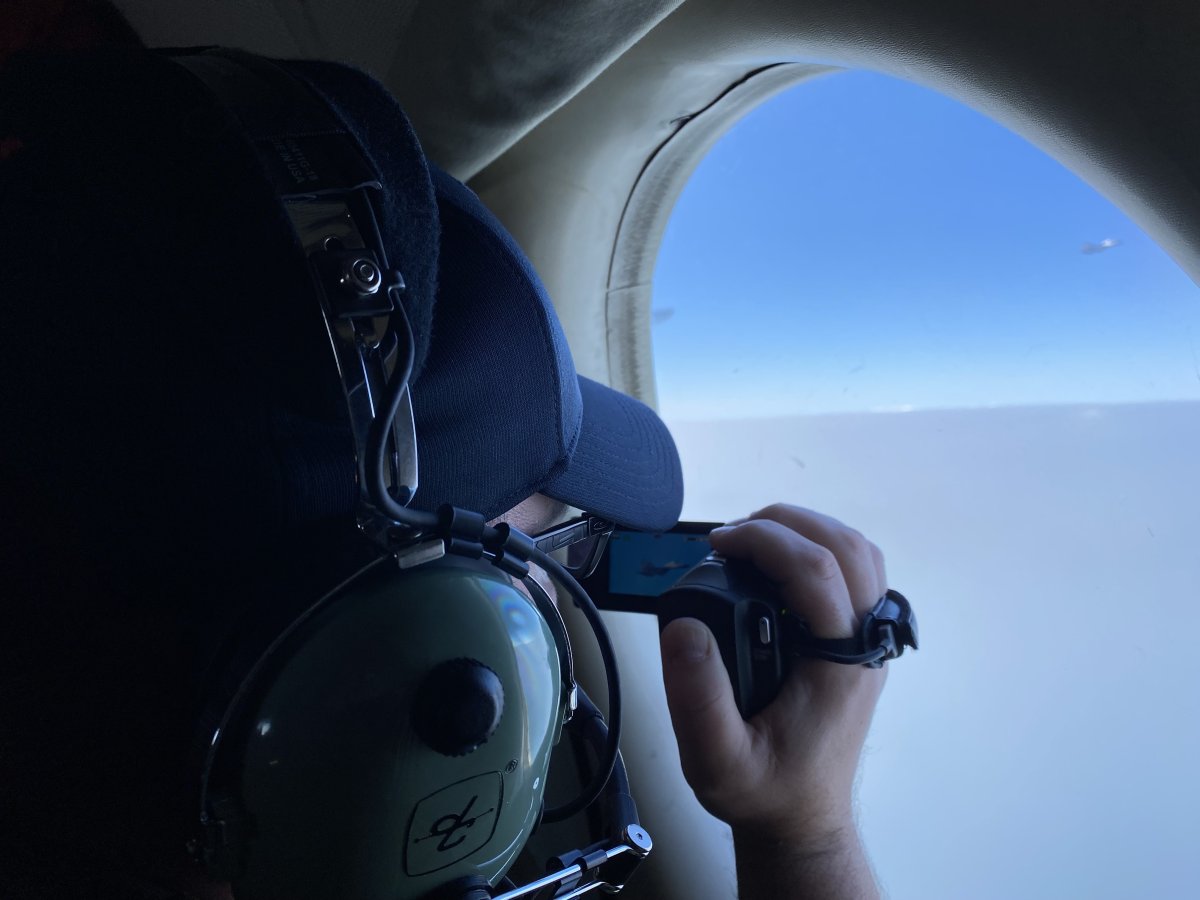The U.S. Department of Defense on Tuesday released declassified photos and videos showing what it called a series of “coercive and risky” intercepts of American military aircraft by Chinese jets over the past two years, which officials say have spiked dramatically.

The Pentagon’s disclosures came a day after a Chinese military jet intercepted a Canadian Armed Forces Aurora aircraft in what the CAF called an “aggressive manner” in international airspace off China’s coast.
Global News was on board the Canadian military aircraft reporting on the mission on Monday, which is part of Operation NEON, Canada’s contribution to helping enforce sanctions against North Korea, when the aggressive intercepts took place over international airspace.
Speaking to reporters at the Pentagon on Tuesday, Ely Ratner, assistant secretary of defence for Indo-Pacific security affairs, said more than 180 intercepts by Chinese aircraft of U.S. military planes have occurred over the past two years — exceeding the number from the decade before.
“When you take into account cases of coercive and risky PLA intercepts against other states, the number increases to nearly 300 cases against U.S., ally and partner aircraft over the last two years,” Ratner said, using the acronym for China’s People’s Liberation Army.
The Pentagon said the activities of the Chinese pilots included “reckless maneuvers, close approaches at high speeds in the air, releasing objects and projectiles like flares, and other dangerous behaviour.”
“The bottom line is that in many cases, this type of operational behaviour can cause active and dangerous accidents” and can inadvertently lead to conflict, Ratner told reporters.

The photos and videos released Tuesday date back to January 2022, but the number of intercepts reported by the Pentagon were between the fall of 2021 and the present day.
The materials were released in advance of a soon-to-be issued annual report by the Pentagon on China’s military power and the security threats it poses to partners in the Indo-Pacific.

Get daily National news
At least two different Chinese jets intercepted the Canadian plane on Monday consistently for multiple hours during the more than eight-hour-long mission, with the jets coming within about five metres of the Canadian plane.
Most of the intercepts were done in a manner that the CAF said they deemed to be professional. But the last jet, which was armed with air-to-air missiles, was aggressively flying back and forth in close proximity while appearing to put the Canadian plane in its blind spot, according to military descriptions and descriptions from Global News crew on the flight.

“It’s a ramp-up of the aggressiveness that’s really unexpected and unnecessary in the context of the mission that we’re flying,” Maj.-Gen. Iain Huddleston told Global News on Monday.
“I’m concerned when they do that. There’s a heightened risk to those sorts of interactions and we’d like to avoid those as much as we can.”
The Chinese jet also launched multiple firework-like flares near the Canadian aircraft. These aggressive intercepts took place shortly after the crew lost contact with their base due to an apparent communications glitch with the equipment.
Monday’s intercept comes just months after a Chinese warship came within 150 yards of hitting the American destroyer USS Chung-Hoon during a joint Canada-U.S. mission sailing through the Taiwan Strait in June 2023. And several months before that, Chinese military jets also intercepted a Royal Canadian Air Force (RCAF) surveillance plane that had also been involved in Operation Neon.
The 13-member crew on board the Canadian mission is tasked with helping to stop illegal oil shipments to North Korea. During this mission, senior CAF members said the crew identified a listed “vessel of interest.”
“We’re here enforcing a United Nations resolution. We are not here acting against the Chinese. We don’t want to have anything untoward happen that would result in loss of life,” Huddleston said.
Beijing, however, appeared to see the NEON mission differently.
“China is firmly opposed to any country jeopardizing our national sovereignty and security in the name of implementing resolutions,” the spokesperson wrote.
“China urges Canada to see the gravity of the incident and refrain from taking any adventurist or provocative moves.”
— with files from Global News’ Neetu Garcha, the Associated Press and Reuters














Comments